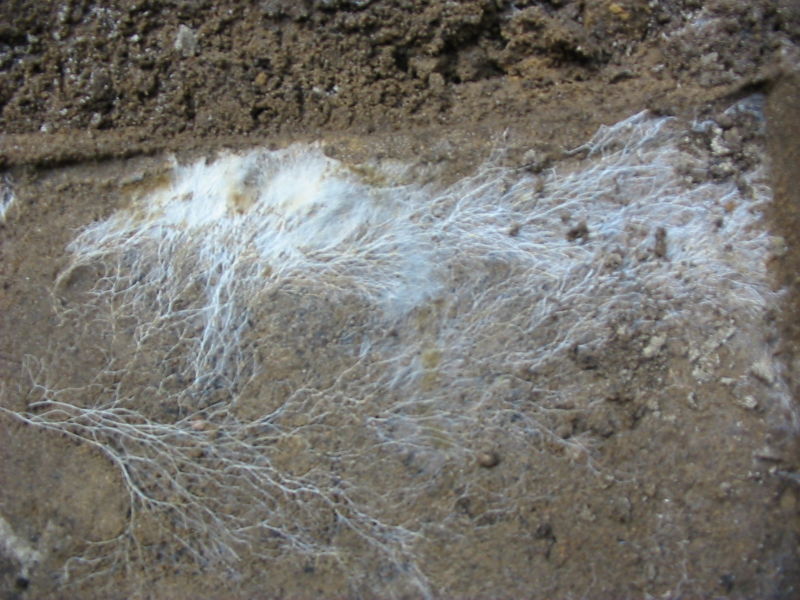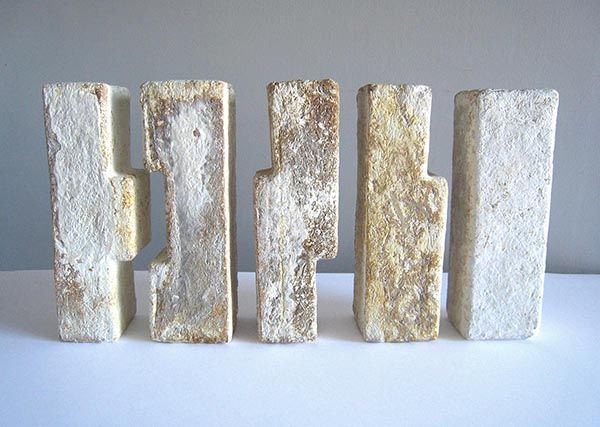Mycelium (MY-SEE-LEE-UM)
The mycelium is the vegetative part of a fungus and usually takes the form of hyphae, which look like threads, or roots. They are usually found underground (or inside some another substance) while the visible part like a mushroom cap is the fruiting body. Mycelium also has uses as a material for a wide variety of purposes. While some were discovered long ago by marginalized societies, its applications are being presented to the wider world.
Properties
Material Characteristics
Composed of a dense mass of fine, thread-like filaments of tissue called hyphae, the mycelium is an essential part of the life support system for the fungus.
Physical & Chemical Properties
Flame Spread Resistant/ Buoyant/ Thermally Insulative/ Home Compostable/ High Compressive Strength/ Acoustic Dampening
Origin & Source
Mycelium spores are released from mushrooms and travel through water or air — some spores “surf” on wind gusts, while others are buoyant and float on streams and lake currents. Once these microscopic spores land in a location that is conducive to growth, they germinate and grow hyphae, breaking down compost or plant matter around them.
History & Usage
History
Fungi like mushrooms have been used for purposes other than food and medicine since pre-history. Fairy societies that dwell within forests are most well known for their association with fungi, especially mushrooms such as using them for decorations or even living with them as sprites. However other sylvan peoples have used fungi for varied purposes like homins, dryads, and isolated elves who would use bioluminescent fungi as lights during the nighttime. During the industrious period however, the use of petroleum in objects was widespread until the various oil crises made it.
Everyday use
Furniture made from mycelium and similar fungal growths can be found in traditional fairy abodes and even some elven and homin living spaces.
Cultural Significance and Usage
FAIRY RINGS
These are naturally occurring ring or arc of mushrooms found mostly in forested areas but sometimes in grasslands as well. Fungus mycelium is present in the ring or arc underneath. The rings may grow to over 10 meters (33 ft) in diameter, and they become stable over time as the fungus grows and seeks food underground. The mycelium will move outward from the center, and when the nutrients in the center are exhausted, the center dies, thereby forming a living ring, from which the fairy ring arises. As the name implies, fairies have historical been involved with this fungal growth. Quite often woodland fairies, especially those sprite sized, would come to gather to sit, converse or play, or rest on top of the mushroom caps. These socializing circles are often said to lead wanders into the realm of the fairies though many have yet to prove this effect.
Industrial Use
MYCELIUM BRICKS
Mycelium can be used as building material as it is grown and baked, and mycelium bricks can be used to make the foundation of walls and furniture. It can also be made into wall tiles, particleboard, a hard foam, and biodegradable packaging.
MYCELIUM FOAM
Mycelium can be made into a hard foam material that can be used for packaging things, liner for other applications.
MYCELIUM LEATHER
Mycelium material is supple and soft, and can be processed into a thickness similar to animal leather.
BIOREMEDIATION
Petroleum products and some pesticides are organic molecule based and so mycelium can be used to decompose and eradicate such pollutants from their environment unless the chemicals prove toxic to the fungus.
Light Fixtures
Mycelium can be shaped into lampshades that can resist the heat radiated by light bulbs.
Acoustic Walls
Mycelium foam can be installed into the lining of walls to make sound dampening rooms and spaces.
Planters
Mycelium of certain species can form symbiotic relationships with certain plants and form effective planting pots.
Chairs and Furniture
Mycelium can be shaped into furniture that can be easier to decompose when not in use
Drink Can Coozies
Mycelium insulative properties can keep hands from getting cold by drinks
Insulation
Mycelium installed in the lining of walls can be used to retain heat.
Refinement
The spores are fed with a mixture of sawdust and other organic material and then spread out to grow. Since temperature and humidity are the main determinants of whether a mycelium will fruit into mushrooms, the environmental conditions are kept under close watch.
Mycelium quickly grows into a foam-like sheet. As it grows, it spreads across the entire mat. When the mat is filled with mycelium, it’s ready to be harvested.
Once the mycelium is harvested, the leftover byproducts are then composted.
Manufacturing & Products
Fungi is one of the most exciting sources ripe with design potential, and creative applications for fungi-based materials range from biodegradable styrofoams to leather-like textile alternatives.
Environmental Impact
Mycelium based products have very little ecological mushrooms grow quickly and create no carbon emissions or waste due to biodegradability.
Reusability & Recycling
Mycelium being a product of fungi is completely biodegradable once its use is finished or it is damaged.
Type
Biomaterial
Color
off-white





Comments